-
 Bitcoin
Bitcoin $115000
0.12% -
 Ethereum
Ethereum $3701
4.50% -
 XRP
XRP $3.081
2.99% -
 Tether USDt
Tether USDt $0.0000
-0.01% -
 BNB
BNB $767.9
1.45% -
 Solana
Solana $169.5
3.13% -
 USDC
USDC $0.9999
0.01% -
 Dogecoin
Dogecoin $0.2106
4.30% -
 TRON
TRON $0.3334
1.62% -
 Cardano
Cardano $0.7564
2.54% -
 Stellar
Stellar $0.4165
0.76% -
 Hyperliquid
Hyperliquid $38.75
0.25% -
 Sui
Sui $3.593
3.00% -
 Chainlink
Chainlink $17.08
3.59% -
 Bitcoin Cash
Bitcoin Cash $573.6
4.35% -
 Hedera
Hedera $0.2508
-0.84% -
 Avalanche
Avalanche $23.07
6.46% -
 Ethena USDe
Ethena USDe $1.001
-0.02% -
 Litecoin
Litecoin $120.8
8.17% -
 UNUS SED LEO
UNUS SED LEO $8.943
-0.32% -
 Toncoin
Toncoin $3.400
-5.60% -
 Shiba Inu
Shiba Inu $0.00001255
1.54% -
 Uniswap
Uniswap $9.908
6.32% -
 Polkadot
Polkadot $3.718
2.10% -
 Monero
Monero $303.0
-0.74% -
 Dai
Dai $0.9999
-0.02% -
 Bitget Token
Bitget Token $4.392
0.91% -
 Cronos
Cronos $0.1403
6.31% -
 Pepe
Pepe $0.00001076
1.13% -
 Aave
Aave $267.2
1.80%
What is the transaction fee and royalty mechanism of NFT?
NFT transaction fees, varying by blockchain (e.g., Ethereum, Solana, Polygon), cover network processing. Royalty mechanisms, embedded in smart contracts, enable creators to receive a percentage of each resale, ensuring ongoing revenue.
Feb 28, 2025 at 03:54 pm
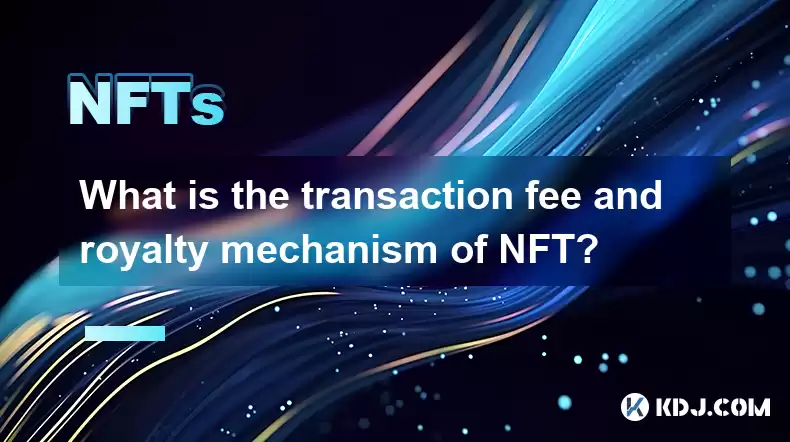
What is the Transaction Fee and Royalty Mechanism of NFTs?
Key Points:
- Transaction Fees: These are fees charged by the blockchain network for processing NFT transactions, like minting, buying, and selling. The amount varies based on network congestion and the specific blockchain used. We will explore the fee structures of Ethereum, Solana, and Polygon.
- Royalty Mechanisms: These are built-in features allowing creators to receive a percentage of each subsequent sale of their NFTs. This ensures ongoing revenue for artists even after the initial sale. We will examine different implementation methods and their implications for creators and buyers.
- Fee Structures Across Different Blockchains: We will compare and contrast the fee structures of different blockchains commonly used for NFTs, highlighting their advantages and disadvantages.
- Smart Contract Implementation: The crucial role of smart contracts in enabling both transaction fees and royalty mechanisms will be detailed. We will examine how these contracts are coded and what parameters can be customized.
- Secondary Market Implications: The impact of transaction fees and royalties on the secondary NFT market will be discussed, including their influence on price discovery and liquidity.
Understanding NFT Transaction Fees
- The Role of Blockchain Networks: NFTs exist on blockchain networks, which are decentralized, public ledgers that record all transactions. These networks require computational power to verify and process transactions, and this is where transaction fees come into play. Think of these fees as the cost of using the network’s resources. These fees are paid in the native cryptocurrency of the blockchain, like ETH for Ethereum, SOL for Solana, and MATIC for Polygon. The amount of the fee is dynamically adjusted based on network congestion. When the network is busy (many transactions happening simultaneously), the fees increase to incentivize miners (or validators) to prioritize transactions. Conversely, when the network is less congested, the fees decrease. This mechanism ensures that transactions are processed efficiently, even during periods of high demand. This dynamic fee system is often referred to as "gas fees" on Ethereum. Different blockchains employ different algorithms to determine these fees, leading to variations in cost.
- Ethereum Transaction Fees (Gas Fees): Ethereum, the most established blockchain for NFTs, has a notoriously volatile gas fee system. The fees are calculated based on the complexity of the transaction and the network’s current demand. Minting an NFT often incurs higher gas fees than simply buying or selling one, as minting requires more computational resources. The fees are paid in Ether (ETH), and the exact amount is not known until the transaction is confirmed. Several gas fee estimators exist to help users predict the cost before submitting a transaction. However, unexpected spikes in network activity can significantly increase the fees, sometimes making NFT transactions prohibitively expensive. This volatility is a major concern for many users, particularly those with smaller budgets. The fluctuating nature of Ethereum gas fees has led to exploration of alternative, cheaper blockchain solutions.
- Solana Transaction Fees: Solana offers significantly lower transaction fees compared to Ethereum. This is primarily due to its different consensus mechanism and more efficient architecture. Solana uses a Proof-of-History (PoH) consensus mechanism, which allows for faster transaction processing and lower fees. The fees are paid in Solana (SOL), and they are generally much more predictable than Ethereum’s gas fees. This predictability makes Solana a more attractive option for users who are sensitive to transaction costs. However, Solana's network has experienced periods of instability in the past, which can indirectly affect transaction fees.
- Polygon Transaction Fees: Polygon is a layer-2 scaling solution built on Ethereum. It aims to reduce transaction fees and improve transaction speeds by processing transactions off the main Ethereum network. This results in significantly lower fees compared to Ethereum, often making it a more cost-effective option for minting and trading NFTs. The fees are typically paid in MATIC, Polygon’s native token. While Polygon offers lower fees, it is still susceptible to fluctuations in network demand. However, the fluctuations are typically less dramatic than those experienced on Ethereum. Choosing between Ethereum, Solana, and Polygon (or other similar Layer-2 solutions) often involves weighing the trade-off between lower fees and the potential for network congestion or instability.
Understanding NFT Royalty Mechanisms
- The Creator's Share: Royalty mechanisms are built into smart contracts that govern NFTs. These contracts automatically allocate a percentage of each subsequent sale of the NFT to the original creator. This percentage is usually set at the time of minting and is immutable unless the creator explicitly modifies it. This allows artists to continuously earn revenue from their work even after the initial sale, creating a sustainable income stream. This is a significant advantage for creators, as it addresses the issue of limited earnings in traditional art markets where artists primarily benefit from the initial sale. This mechanism has significantly impacted the NFT space, fostering a more equitable relationship between artists and collectors.
- Smart Contract Implementation: The royalty mechanism is entirely dependent on the smart contract code. The contract contains a function that automatically calculates and transfers the royalty payment to the creator's designated wallet address upon each secondary sale. Different platforms and marketplaces may implement this function slightly differently, but the underlying principle remains the same. The parameters of the royalty percentage, the creator's wallet address, and other relevant details are encoded within the contract at the time of NFT creation. The immutability of smart contracts ensures that these parameters cannot be easily altered without the creator's consent. This is a critical aspect of protecting the creator's rights and ensuring they receive their rightful share of the profits.
- Variations in Implementation: While the basic principle of royalty mechanisms remains consistent, different platforms and marketplaces might have varying implementations. Some platforms might automatically enforce royalties on all transactions, while others might leave it up to the individual NFT marketplaces or even the buyers and sellers to agree on the royalty payment. This variation highlights the importance of understanding the specific platform's policies before participating in NFT transactions. Lack of standardization across different platforms can create challenges for creators in tracking their royalties and ensuring they receive their fair share. The lack of universal enforcement mechanisms also presents opportunities for manipulation or avoidance of royalty payments.
- Enforcement and Challenges: While royalty mechanisms are intended to provide continuous revenue for creators, enforcement can be challenging. Some marketplaces might not fully support royalty payments, or they might offer ways to circumvent the mechanism. This creates a need for standardization and robust enforcement mechanisms across the NFT ecosystem. Furthermore, the legal framework surrounding NFT royalties is still evolving, and disputes regarding royalty payments are not uncommon. Addressing these challenges requires collaboration between creators, marketplaces, and regulators to create a more sustainable and equitable environment for NFT creators. The development of standardized royalty protocols and improved enforcement mechanisms are crucial to ensure the long-term viability and fairness of royalty systems in the NFT space.
Secondary Market Implications
- Price Discovery and Liquidity: Transaction fees and royalty mechanisms directly impact the secondary market for NFTs. High transaction fees can discourage buyers and sellers, reducing overall trading volume and liquidity. This can also hinder price discovery, as fewer transactions might not accurately reflect the true market value of the NFTs. The interplay between transaction fees and royalty mechanisms affects the overall pricing strategy of buyers and sellers, as they must factor in these costs when making their decisions. This dynamic necessitates a thorough understanding of the fee structures and royalty percentages to effectively participate in the secondary market.
- Collector Behavior: The presence of royalty mechanisms influences collector behavior. Some collectors might be more willing to purchase NFTs from creators who retain a royalty share, as it shows the creator's commitment to their work and ongoing engagement with the community. Others might be more price-sensitive and might be discouraged by the additional cost of royalties. This varied collector behavior creates a complex market dynamic where the interplay between price, artist reputation, and royalty mechanisms determines trading patterns. Analyzing collector behavior is essential to understanding the success and sustainability of individual NFT projects and the market as a whole.
- Market Efficiency and Sustainability: The efficiency and sustainability of the NFT market are significantly influenced by the design and implementation of transaction fees and royalty mechanisms. High transaction fees can hinder market efficiency by making trading more expensive and less accessible. Well-designed royalty mechanisms, on the other hand, can promote market sustainability by ensuring that creators receive a fair share of the profits from their work, encouraging continuous creation and innovation within the ecosystem. Finding the right balance between transaction fees and royalty mechanisms is crucial for creating a vibrant and sustainable NFT market.
FAQs
Q: What are the typical royalty percentages for NFTs?
A: Royalty percentages vary widely depending on the creator and the project. Common percentages range from 2.5% to 10%, but some projects might use higher or lower percentages. The percentage is typically set during the minting process and is encoded in the smart contract.
Q: Can royalty percentages be changed after an NFT is minted?
A: Generally, no. The royalty percentage is usually fixed within the smart contract at the time of minting. Changing it requires modifying the smart contract, which is usually not possible without significant technical expertise and potentially requires the consent of all parties involved.
Q: What happens if a marketplace doesn't enforce royalties?
A: If a marketplace doesn't enforce royalties, the creator won't receive their share of the profits from subsequent sales. This is a significant concern for creators and highlights the importance of choosing reputable marketplaces that actively support royalty payments.
Q: How are transaction fees calculated on different blockchains?
A: The calculation of transaction fees varies across different blockchains. Ethereum uses a gas fee system based on computational complexity and network congestion. Solana and Polygon have their own fee mechanisms, which are generally lower than Ethereum's, but can still fluctuate based on network activity.
Q: Are transaction fees the same for minting and trading NFTs?
A: No, transaction fees are usually higher for minting NFTs compared to trading them. Minting requires more computational resources, leading to higher fees.
Q: Can I avoid paying royalties when buying an NFT?
A: In most cases, no. Royalties are automatically calculated and paid through the smart contract upon each sale. Attempting to circumvent this mechanism is usually against the terms of service of most marketplaces and could have legal ramifications.
Q: How can I check the royalty percentage of an NFT?
A: The royalty percentage is typically displayed on the NFT marketplace where the NFT is listed. You can also usually find this information in the NFT's metadata or on the blockchain explorer.
Q: What blockchains are most commonly used for NFTs with royalty mechanisms?
A: Ethereum is the most established blockchain for NFTs with royalty mechanisms, but other blockchains like Solana, Polygon, and Tezos also support them. The choice of blockchain often depends on the desired balance between transaction costs, scalability, and community support.
Disclaimer:info@kdj.com
The information provided is not trading advice. kdj.com does not assume any responsibility for any investments made based on the information provided in this article. Cryptocurrencies are highly volatile and it is highly recommended that you invest with caution after thorough research!
If you believe that the content used on this website infringes your copyright, please contact us immediately (info@kdj.com) and we will delete it promptly.
- Velo Universe, DEX, and DeFi Security: Navigating the Future of Decentralized Trading
- 2025-08-05 09:25:13
- Bitget Wallet Revolutionizes Solana with Gas-Free Transactions: A New Era for DeFi
- 2025-08-05 09:25:13
- Cryptocurrency, Altcoins, and Profit Potential: Navigating the Wild West
- 2025-08-04 14:50:11
- Blue Gold & Crypto: Investing Disruption in Precious Metals
- 2025-08-04 14:30:11
- Japan, Metaplanet, and Bitcoin Acquisition: A New Era of Corporate Treasury?
- 2025-08-04 14:30:11
- Coinbase's Buy Rating & Bitcoin's Bold Future: A Canaccord Genuity Perspective
- 2025-08-04 14:50:11
Related knowledge
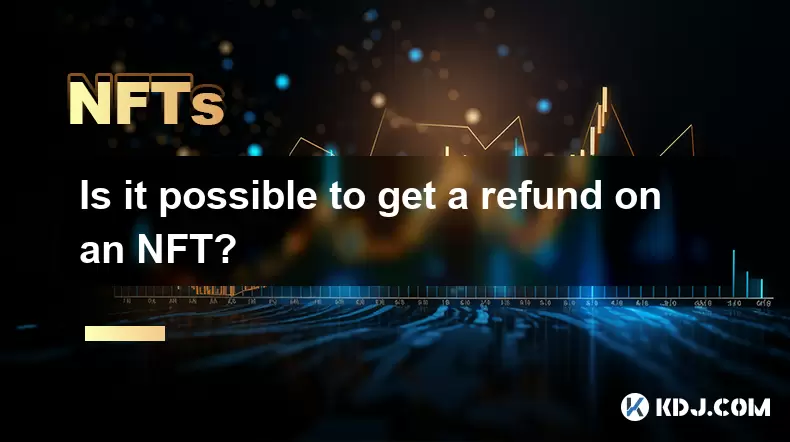
Is it possible to get a refund on an NFT?
Jul 21,2025 at 08:35pm
Understanding NFT Transactions and RefundsWhen you purchase an NFT (Non-Fungible Token), the transaction is typically recorded on a blockchain, making...
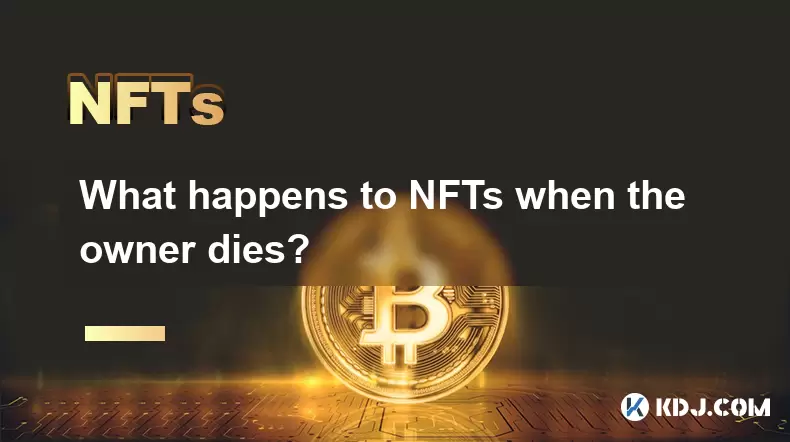
What happens to NFTs when the owner dies?
Jul 22,2025 at 02:43pm
Legal Ownership and Digital AssetsWhen an individual owns NFTs, the question of what happens to these assets upon their death is a pressing one. NFTs ...
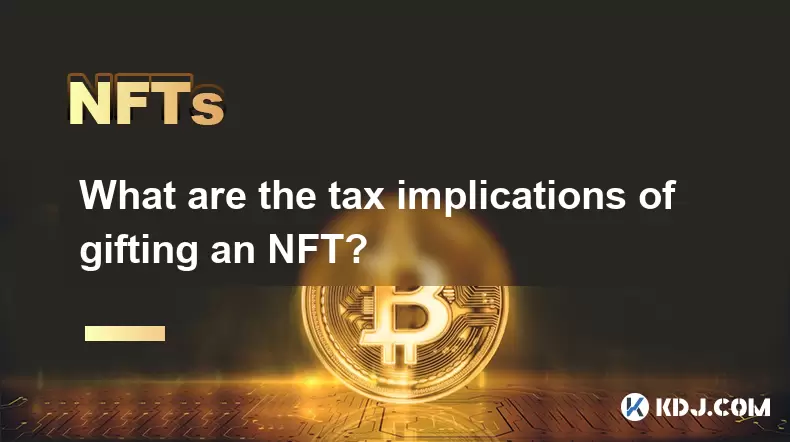
What are the tax implications of gifting an NFT?
Jul 19,2025 at 04:21am
Understanding the Basics of NFT GiftingGifting a Non-Fungible Token (NFT) involves transferring ownership from one individual to another without recei...
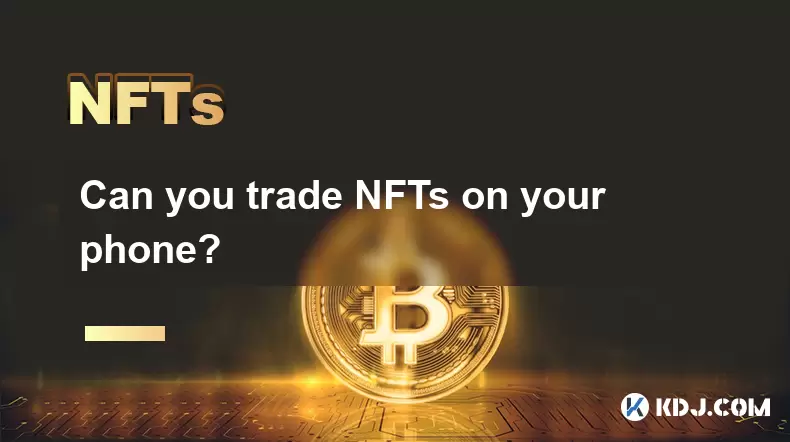
Can you trade NFTs on your phone?
Jul 18,2025 at 04:29am
Trading NFTs on Mobile DevicesYes, you can trade NFTs on your phone, and the process has become increasingly streamlined thanks to a variety of mobile...
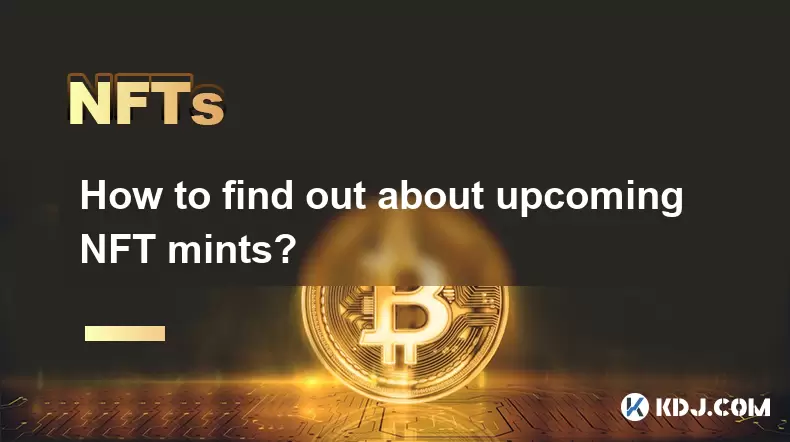
How to find out about upcoming NFT mints?
Jul 18,2025 at 11:50am
Exploring NFT Minting OpportunitiesUnderstanding the landscape of upcoming NFT mints is crucial for collectors, investors, and creators who wish to st...
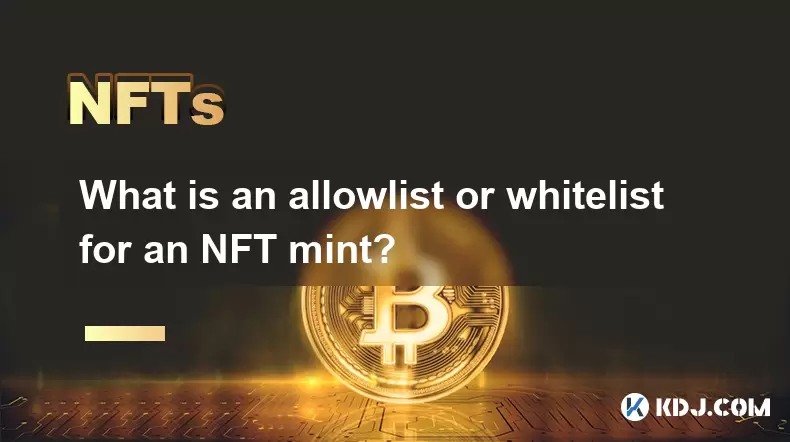
What is an allowlist or whitelist for an NFT mint?
Jul 20,2025 at 07:14pm
Understanding the Concept of an Allowlist for NFT MintingAn allowlist, also commonly referred to as a whitelist, is a mechanism used in the NFT mintin...

Is it possible to get a refund on an NFT?
Jul 21,2025 at 08:35pm
Understanding NFT Transactions and RefundsWhen you purchase an NFT (Non-Fungible Token), the transaction is typically recorded on a blockchain, making...

What happens to NFTs when the owner dies?
Jul 22,2025 at 02:43pm
Legal Ownership and Digital AssetsWhen an individual owns NFTs, the question of what happens to these assets upon their death is a pressing one. NFTs ...

What are the tax implications of gifting an NFT?
Jul 19,2025 at 04:21am
Understanding the Basics of NFT GiftingGifting a Non-Fungible Token (NFT) involves transferring ownership from one individual to another without recei...

Can you trade NFTs on your phone?
Jul 18,2025 at 04:29am
Trading NFTs on Mobile DevicesYes, you can trade NFTs on your phone, and the process has become increasingly streamlined thanks to a variety of mobile...

How to find out about upcoming NFT mints?
Jul 18,2025 at 11:50am
Exploring NFT Minting OpportunitiesUnderstanding the landscape of upcoming NFT mints is crucial for collectors, investors, and creators who wish to st...

What is an allowlist or whitelist for an NFT mint?
Jul 20,2025 at 07:14pm
Understanding the Concept of an Allowlist for NFT MintingAn allowlist, also commonly referred to as a whitelist, is a mechanism used in the NFT mintin...
See all articles

























































































